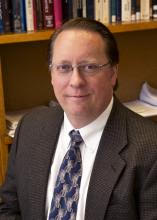Stellarator Research Needs for Fusion Energy Development
On Wednesday, Nov. 8 2017, Dr. David Gates (Princeton Plasma Physics Laboratory) will give a presentation on current topics in fusion research. The presentation starts at 3:30 PM and will be held at the Crawford Hill Conference Room at Bell Labs, Crawford Hill, NJ. Please register in advance to provide the organizers an approximate headcount, and to prepare a visitor badge for access to the Nokia Bell Labs facilities.
Date and Time
Location
Hosts
Registration
-
 Add Event to Calendar
Add Event to Calendar
Speakers
 Dr. David A. Gates of Princeton Plasma Physics Laboratory
Dr. David A. Gates of Princeton Plasma Physics Laboratory
Stellarator Research Needs for Fusion Energy Development
The stellarator offers ready solutions to critical challenges for toroidal confinement fusion: it provides a steady-state, disruption-free reactor concept with minimal power requirements for plasma sustainment. The stellarator concept has undergone a rebirth in recent years as a result of major advances in theoretical understanding, the advent of computational capabilities, and experimental research that have made predictive understanding of many aspects of three dimensional magnetic confinement systems a reality. As a result of these advances stellarators are at the forefront of plasma physics research. The configurational flexibility afforded by the removal of the toroidal symmetry constraint opens up new physics regimes. It allows us to test our understanding of symmetry effects on plasma confinement and to produce the most physics-optimized fusion configuration yet conceived. The US stellarator community proposes to undertake an integrated stellarator initiative to test innovations that can dramatically improve plasma confinement and provide a more robust basis for the development of fusion energy. Optimized designs would combine features of neoclassically optimized high-β concepts with opportunities for new conceptual advances such as:
• Reduction of turbulent transport.
• Use of QS to improve high-energy particle confinement and reduce impurity accumulation.
• Simplified coils/support structures, with reduced non-planar distortion and increased access.
• A robust divertor system that is insensitive to the details of the equilibrium.
A successful optimization and design effort based on the above steps will lead directly to plans for enhanced research facilities.
Biography:
David Gates is a managing research physicist for the advanced projects division of PPPL, and the stellarator physics division head at the Laboratory. In the latter capacity he leads collaborative efforts with the Wendelstein 7-X and Large Helical Device stellarator projects in Germany and Japan, respectively. He an expert in the areas of stellarator design, magnetohydrodynamics, and plasma control. He spent four years from (1993-1997) working at Culham Laboratory in Oxfordshire, England. He received his Ph. D. from Columbia University in 1994 and his Bachelors of Science from the University of Wisconsin-Madison in 1986. He is a fellow of the American Physical Society.
Address:100 Stellarator Rd., , Princeton, New Jersey, United States, 08540
Dr. David A. Gates of Princeton Plasma Physics Laboratory
Stellarator Research Needs for Fusion Energy Development
Biography:
Address:Princeton, New Jersey, United States

